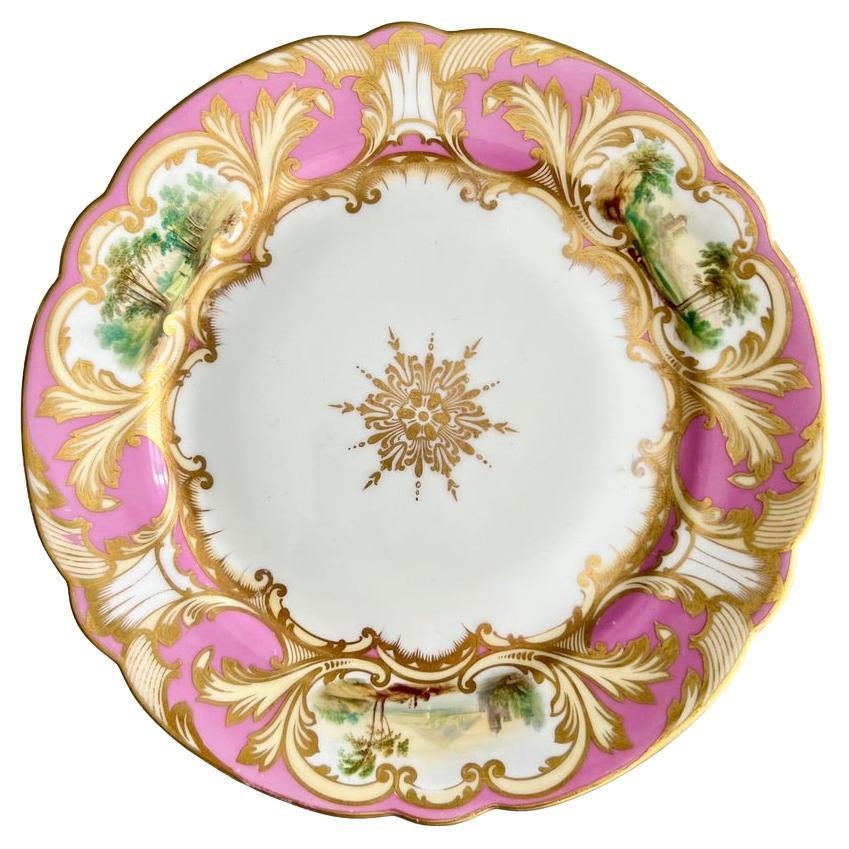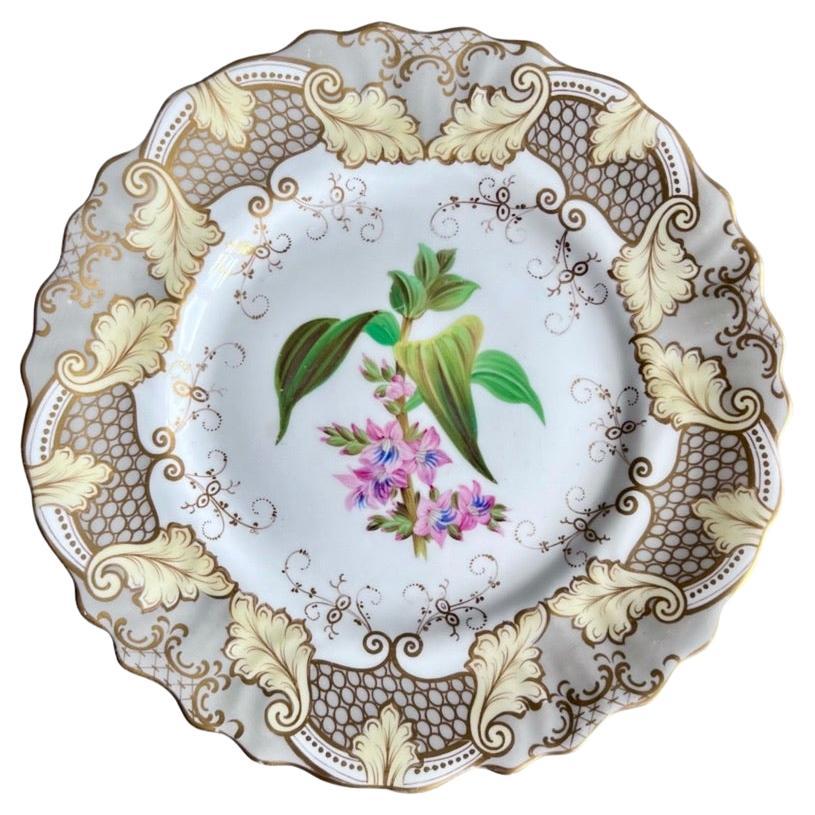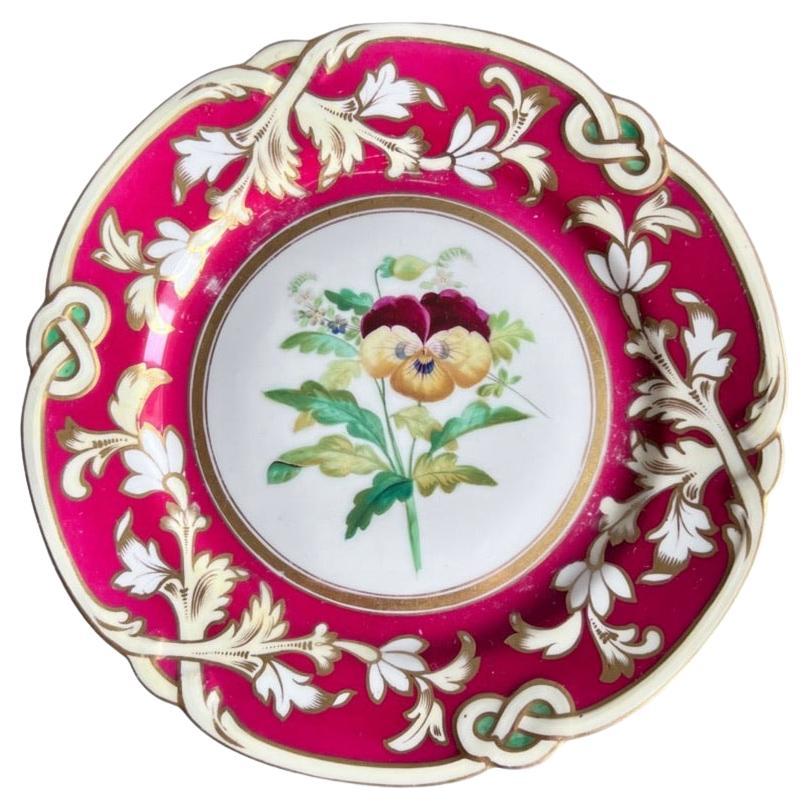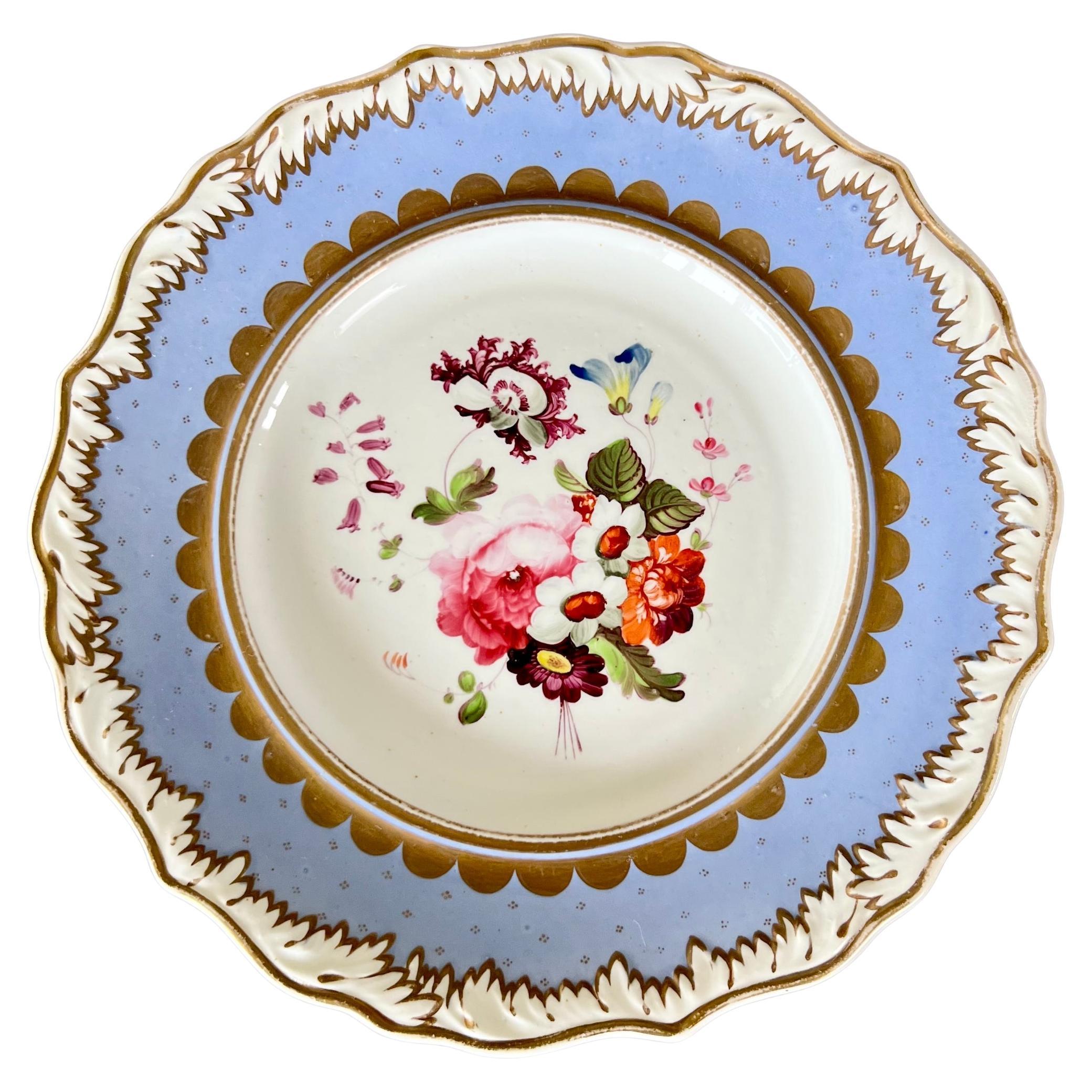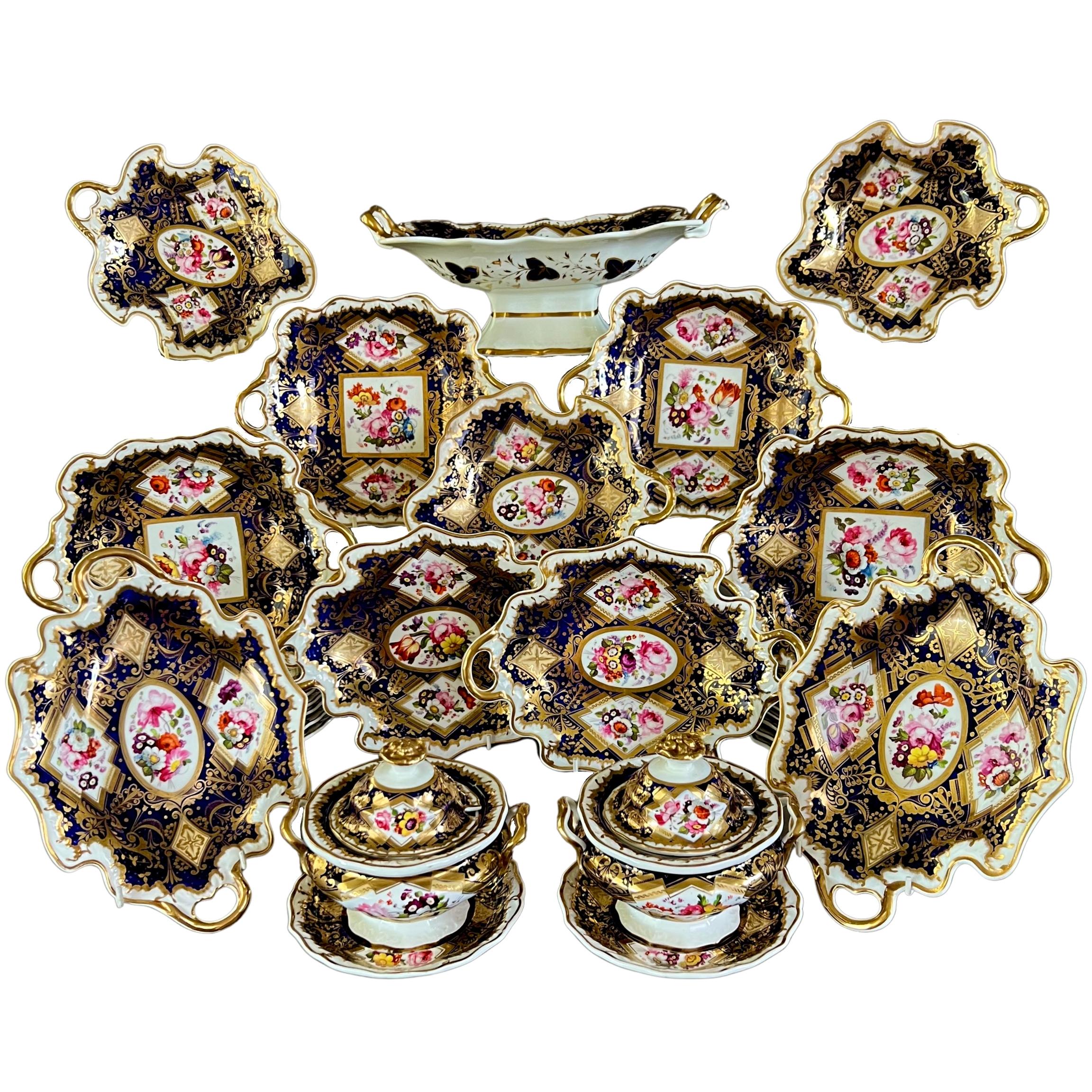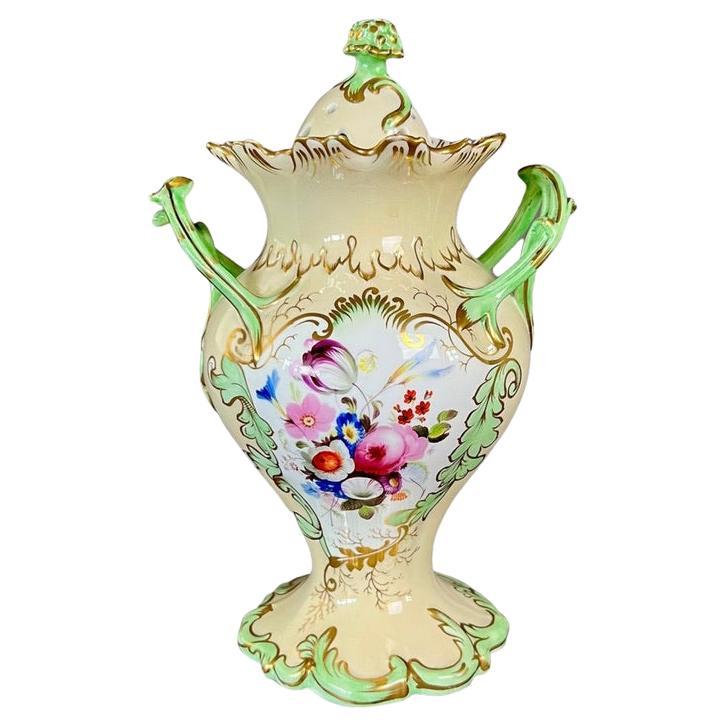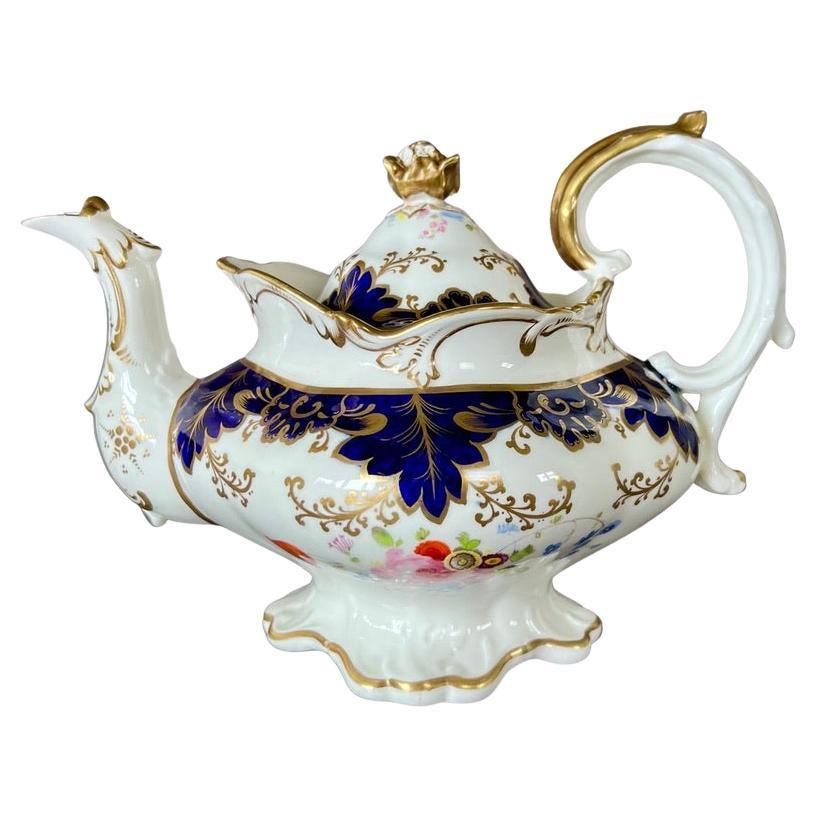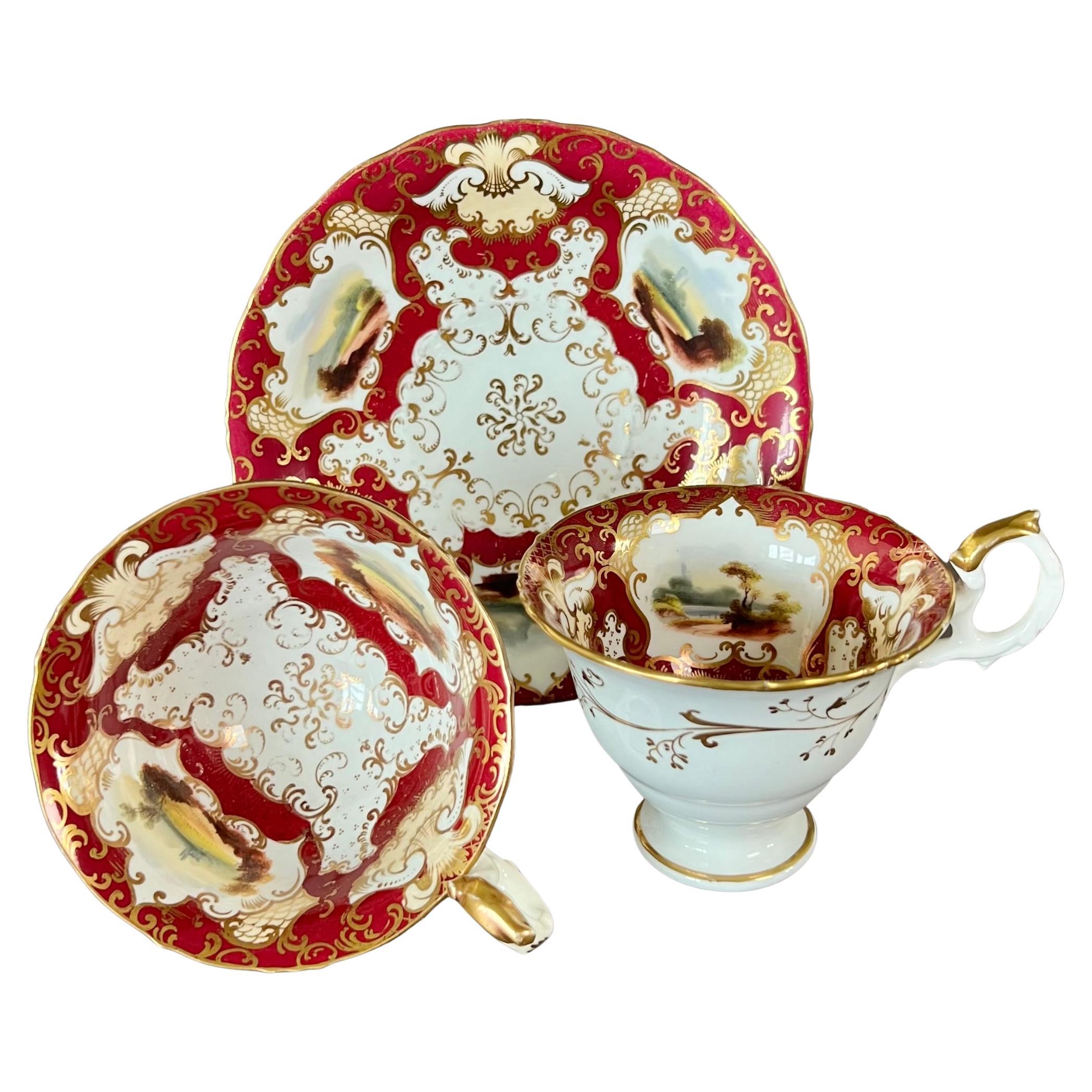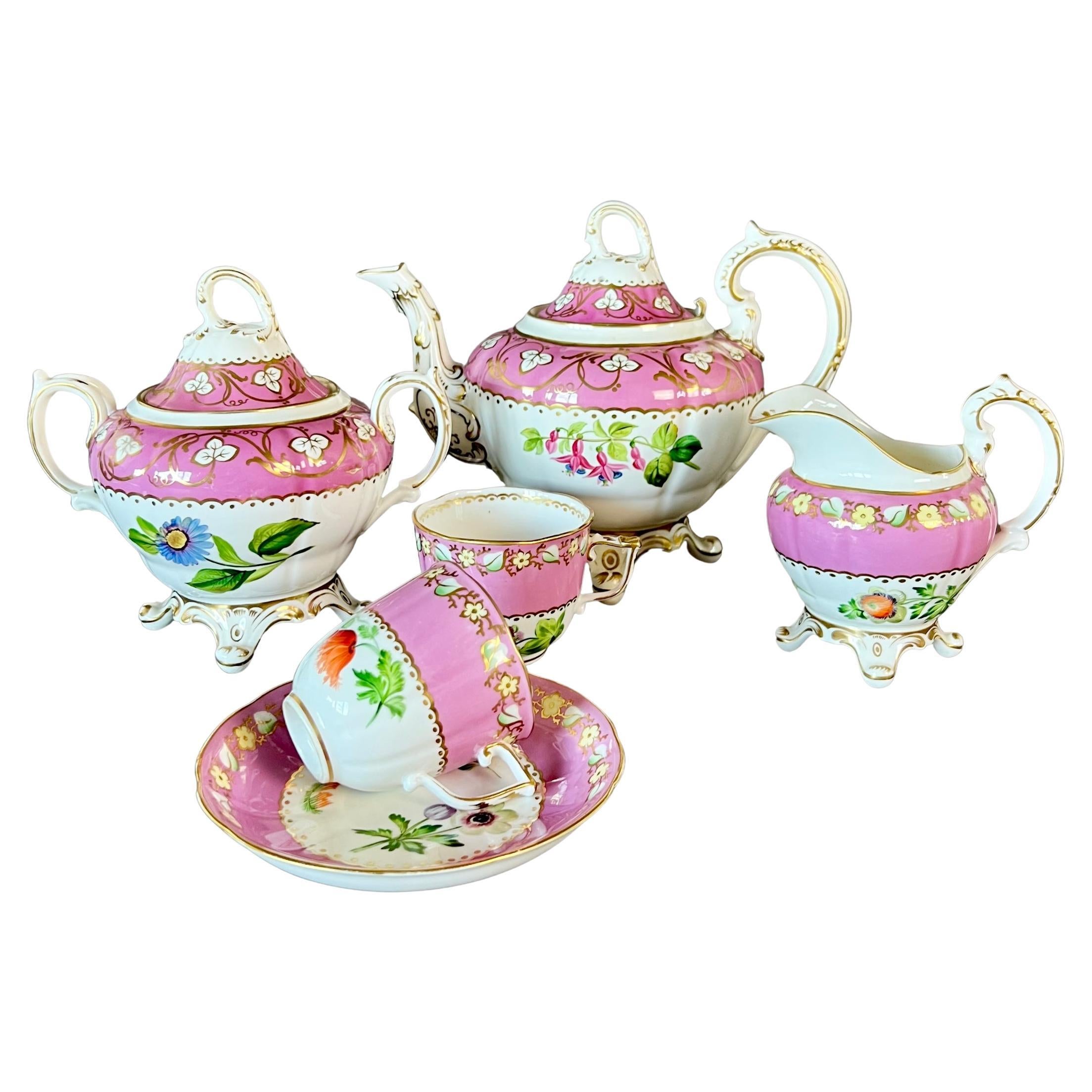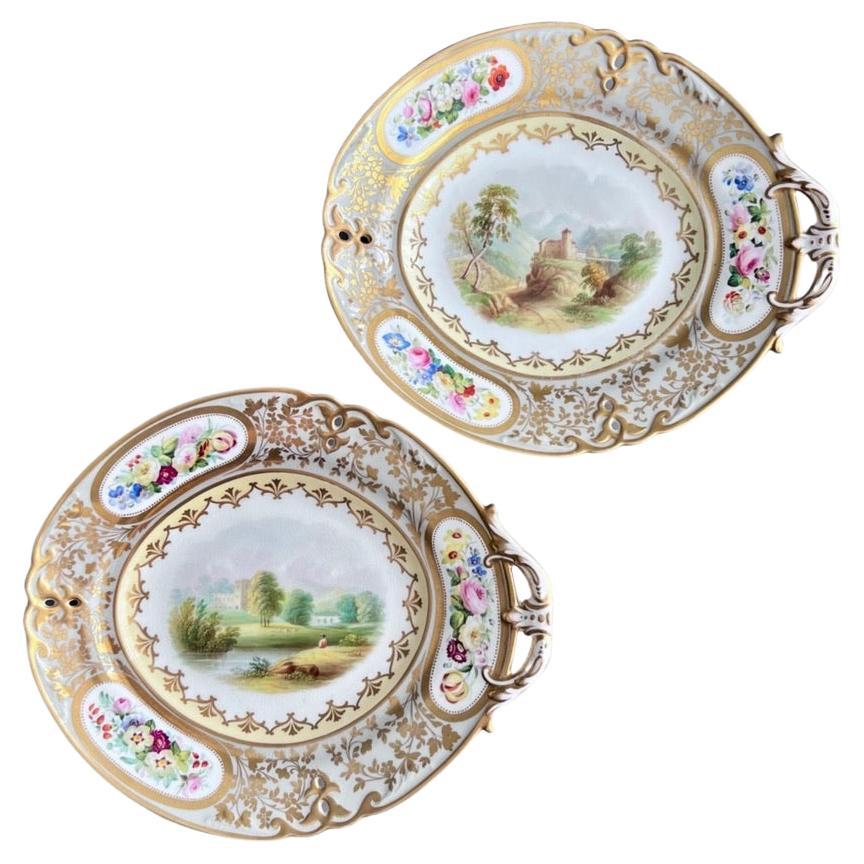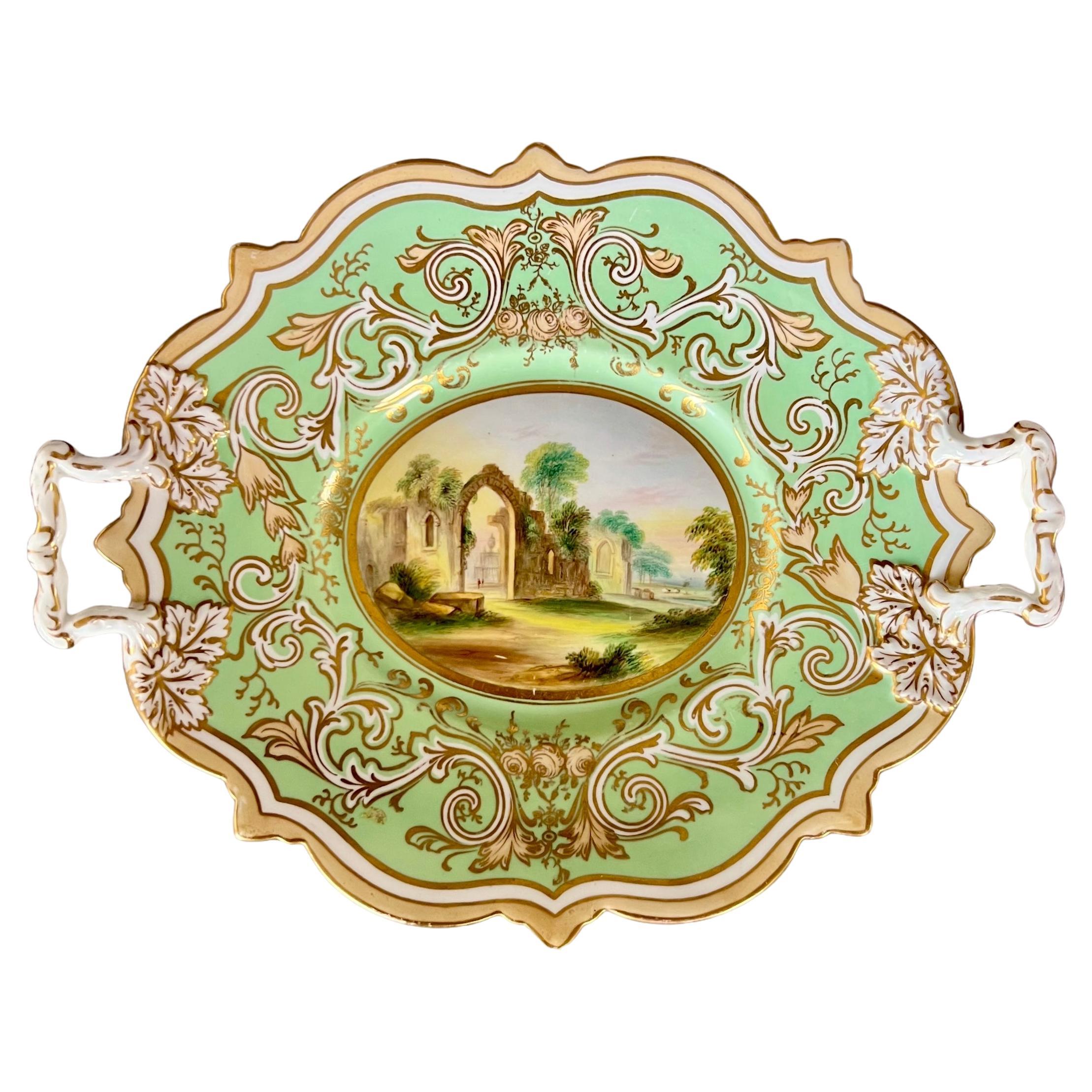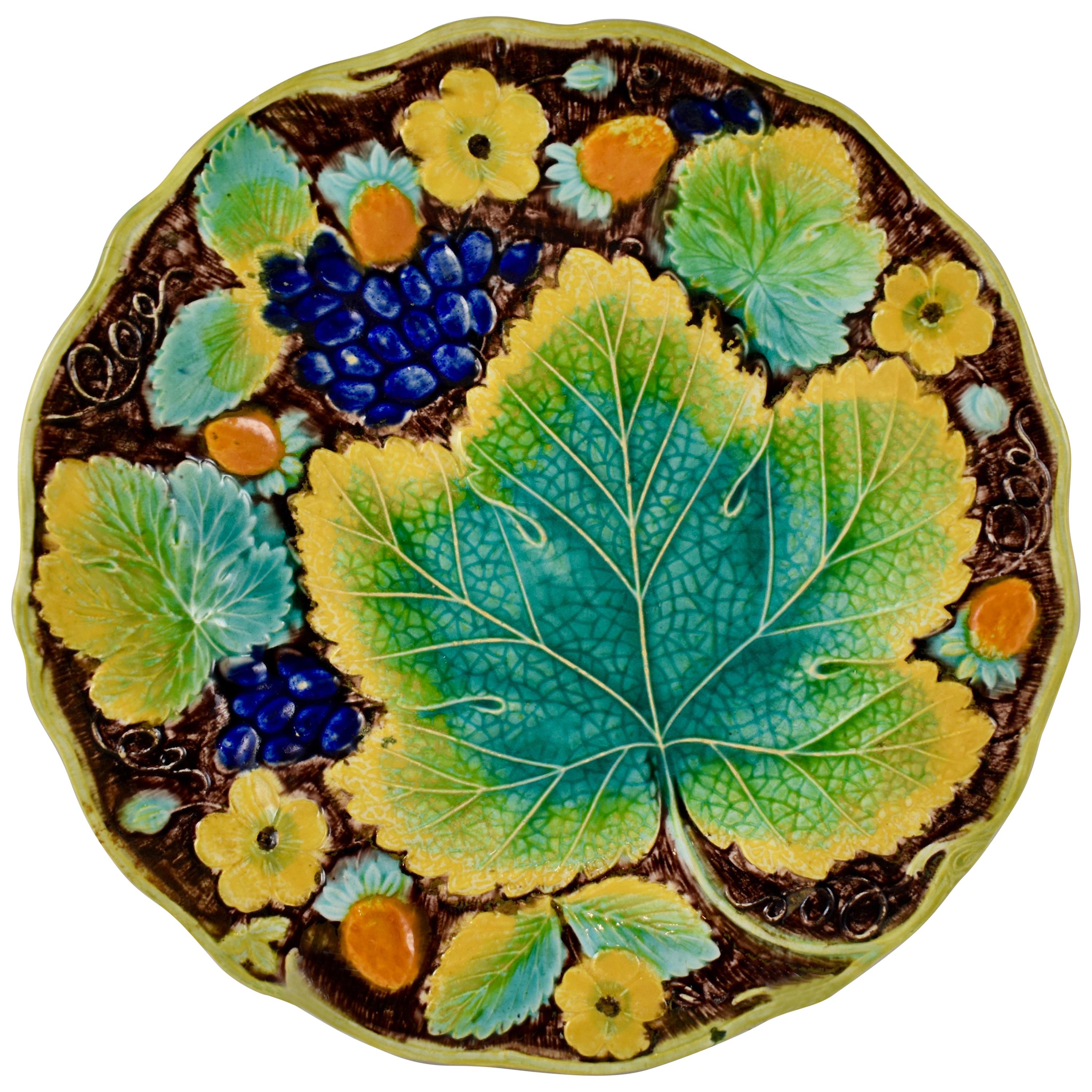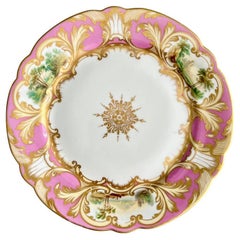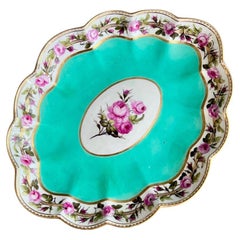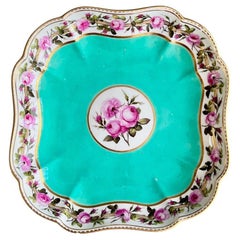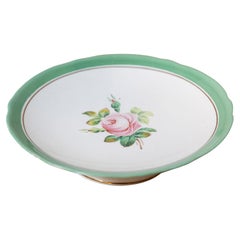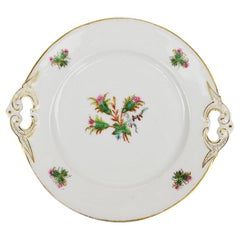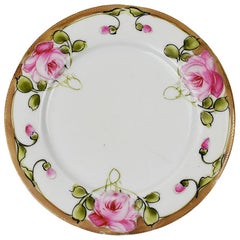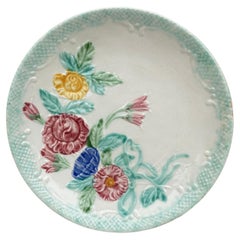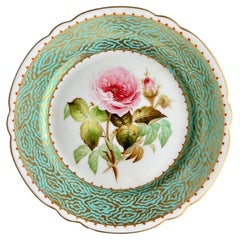
Samuel Alcock Plate, Eau de Nile Green, Gilt, Pink Moss Rose, ca 1850
View Similar Items
Want more images or videos?
Request additional images or videos from the seller
1 of 11
Samuel Alcock Plate, Eau de Nile Green, Gilt, Pink Moss Rose, ca 1850
$395List Price
About the Item
- Creator:Samuel Alcock & Co. (Maker)
- Dimensions:Height: 0.75 in (1.91 cm)Diameter: 9 in (22.86 cm)
- Style:Rococo Revival (Of the Period)
- Materials and Techniques:
- Place of Origin:
- Period:
- Date of Manufacture:circa 1850
- Condition:Wear consistent with age and use. no damage, crazing or repairs and very minimal stacking wear.
- Seller Location:London, GB
- Reference Number:Seller: MP-ALC1401stDibs: LU4805145689172
About the Seller
5.0
Gold Seller
Premium sellers maintaining a 4.3+ rating and 24-hour response times
Established in 2016
1stDibs seller since 2019
225 sales on 1stDibs
Typical response time: 2 hours
Authenticity Guarantee
In the unlikely event there’s an issue with an item’s authenticity, contact us within 1 year for a full refund. DetailsMoney-Back Guarantee
If your item is not as described, is damaged in transit, or does not arrive, contact us within 7 days for a full refund. Details24-Hour Cancellation
You have a 24-hour grace period in which to reconsider your purchase, with no questions asked.Vetted Professional Sellers
Our world-class sellers must adhere to strict standards for service and quality, maintaining the integrity of our listings.Price-Match Guarantee
If you find that a seller listed the same item for a lower price elsewhere, we’ll match it.Trusted Global Delivery
Our best-in-class carrier network provides specialized shipping options worldwide, including custom delivery.More From This Seller
View AllSamuel Alcock Plate, Pink and Gilt, Landscape Reserves, ca 1855
By Samuel Alcock & Co.
Located in London, GB
This is a beautiful plate in the 8-lobed shape, with a deep pink ground and rich pale yellow and gilt acanthus and shell decoration, three scrolled reserves with exceptionally finely...
Category
Antique 1850s English Rococo Revival Porcelain
Materials
Porcelain
Derby Lobed Dish, Camden Service, William Billingsley Roses on Green, 1795 (1)
By Derby
Located in London, GB
This is a very rare oval lobed dish from the famous "Earl of Camden" service made by the Derby Porcelain Company in 1795. The service was painted with typical English roses by William Billingsley, one of Britain's most famous painters, and responsible for exactly this type of rose painting on British porcelain.
There are more items available in this pattern, see separate listings. To keep these items together we'd be happy to offer a discount on multiple purchases - please ask!
The Derby Porcelain Company, later called Royal Crown Derby, is currently the oldest British porcelain factory still in production. The Derby pottery was one of the most prominent potteries right from the start of English porcelain production in the mid 1700s to today, and the factory went through many iterations. In the 1820s, it was called "Bloor Derby" as it came under the ownership of Robert Bloor; this factory later closed but its legacy was continued under the ownership of a group of employees, and later this was merged into a new factory called Royal Crown Derby, which is still in operation today and still carries forward some of the oldest patterns that have made it famous over the centuries.
William Billingsley was a brilliant but notoriously difficult man who left behind a trail of debts, broken hearts and mystery - but he was also one of the most important people in the history British porcelain. Billingsley revolutionised the way British decorators painted flowers; he added a freedom and artistry that now singles out British flower painting, and he created a new technique for painting roses, which you can see in this design. Billingsley worked at Derby, Worcester and Mansfield. He also set up his own potteries in Pinxton and Nantgarw and created some of the best porcelain ever made, but racking up great debts, before running off in the dead of night and ending his days at Coalport painting flowers.
Items painted by William Billingsley are rare and very much in demand - together with Thomas Baxter's work they are probably among the most desired pieces of British porcelain.
The Earl of Camden service was a huge service ordered by Lady Camden in 1795. It had to be produced under great, and unrealistic, time pressure and was notoriously late, much to Lady Camden's chagrin. She wanted the service to be produced by only the best artisans and therefore William Billingsley was tasked with painting all items - but it is thought that when it was clear the deadline was impossible to make, he enlisted the help of John Brewer for some of the last items, such as the ice pails. This plate shows the typical "Billingsley" roses: a beautiful naturally flowing garland of English roses interspersed with buds, trailing around a crisp gilt ribbon. The way the roses link into each other, the way each individual one is completely different, the light effects achieved by rubbing out some of the pink paint, and the very fine buds and foliage all point to these being from Billingsley's hand.
This dish came together with a plate that bears labels that point to a rich provenance: the Doris Wheatley Collection, the Daniel Collection, Derek Gardner...
Category
Antique 1790s English George III Serving Bowls
Materials
Porcelain
Derby Oval Dish, Camden Service, William Billingsley Roses on Green, 1795 (2)
By Derby
Located in London, GB
This is a very rare oval lobed dish from the famous "Earl of Camden" service made by the Derby Porcelain Company in 1795. The service was painted with typical English roses by William Billingsley, one of Britain's most famous painters, and responsible for exactly this type of rose painting on British porcelain.
There are more items available in this pattern, see separate listings. To keep these items together we'd be happy to offer a discount on multiple purchases - please ask!
The Derby Porcelain Company, later called Royal Crown Derby, is currently the oldest British porcelain factory still in production. The Derby pottery was one of the most prominent potteries right from the start of English porcelain production in the mid 1700s to today, and the factory went through many iterations. In the 1820s, it was called "Bloor Derby" as it came under the ownership of Robert Bloor; this factory later closed but its legacy was continued under the ownership of a group of employees, and later this was merged into a new factory called Royal Crown Derby, which is still in operation today and still carries forward some of the oldest patterns that have made it famous over the centuries.
William Billingsley was a brilliant but notoriously difficult man who left behind a trail of debts, broken hearts and mystery - but he was also one of the most important people in the history British porcelain. Billingsley revolutionised the way British decorators painted flowers; he added a freedom and artistry that now singles out British flower painting, and he created a new technique for painting roses, which you can see in this design. Billingsley worked at Derby, Worcester and Mansfield. He also set up his own potteries in Pinxton and Nantgarw and created some of the best porcelain ever made, but racking up great debts, before running off in the dead of night and ending his days at Coalport painting flowers.
Items painted by William Billingsley are rare and very much in demand - together with Thomas Baxter's work they are probably among the most desired pieces of British porcelain.
The Earl of Camden service was a huge service ordered by Lady Camden in 1795. It had to be produced under great, and unrealistic, time pressure and was notoriously late, much to Lady Camden's chagrin. She wanted the service to be produced by only the best artisans and therefore William Billingsley was tasked with painting all items - but it is thought that when it was clear the deadline was impossible to make, he enlisted the help of John Brewer for some of the last items, such as the ice pails. This plate shows the typical "Billingsley" roses: a beautiful naturally flowing garland of English roses interspersed with buds, trailing around a crisp gilt ribbon. The way the roses link into each other, the way each individual one is completely different, the light effects achieved by rubbing out some of the pink paint, and the very fine buds and foliage all point to these being from Billingsley's hand.
This dish came together with a plate that bears labels that point to a rich provenance: the Doris Wheatley Collection, the Daniel Collection, Derek Gardner...
Category
Antique 1790s English George III Serving Bowls
Materials
Porcelain
Derby Square Dish, Camden Service, William Billingsley Roses on Green, 1795
By Derby
Located in London, GB
This is a very rare square dish from the famous "Earl of Camden" service made by the Derby Porcelain Company in 1795. The service was painted with typical English roses by William Billingsley, one of Britain's most famous painters, and responsible for exactly this type of rose painting on British porcelain.
There are more items available in this pattern, see separate listings. To keep these items together we'd be happy to offer a discount on multiple purchases - please ask!
The Derby Porcelain Company, later called Royal Crown Derby, is currently the oldest British porcelain factory still in production. The Derby pottery was one of the most prominent potteries right from the start of English porcelain production in the mid 1700s to today, and the factory went through many iterations. In the 1820s, it was called "Bloor Derby" as it came under the ownership of Robert Bloor; this factory later closed but its legacy was continued under the ownership of a group of employees, and later this was merged into a new factory called Royal Crown Derby, which is still in operation today and still carries forward some of the oldest patterns that have made it famous over the centuries.
William Billingsley was a brilliant but notoriously difficult man who left behind a trail of debts, broken hearts and mystery - but he was also one of the most important people in the history British porcelain. Billingsley revolutionised the way British decorators painted flowers; he added a freedom and artistry that now singles out British flower painting, and he created a new technique for painting roses, which you can see in this design. Billingsley worked at Derby, Worcester and Mansfield. He also set up his own potteries in Pinxton and Nantgarw and created some of the best porcelain ever made, but racking up great debts, before running off in the dead of night and ending his days at Coalport painting flowers.
Items painted by William Billingsley are rare and very much in demand - together with Thomas Baxter's work they are probably among the most desired pieces of British porcelain.
The Earl of Camden service was a huge service ordered by Lady Camden in 1795. It had to be produced under great, and unrealistic, time pressure and was notoriously late, much to Lady Camden's chagrin. She wanted the service to be produced by only the best artisans and therefore William Billingsley was tasked with painting all items - but it is thought that when it was clear the deadline was impossible to make, he enlisted the help of John Brewer for some of the last items, such as the ice pails. This plate shows the typical "Billingsley" roses: a beautiful naturally flowing garland of English roses interspersed with buds, trailing around a crisp gilt ribbon. The way the roses link into each other, the way each individual one is completely different, the light effects achieved by rubbing out some of the pink paint, and the very fine buds and foliage all point to these being from Billingsley's hand.
This dish came together with a plate that bears labels that point to a rich provenance: the Doris Wheatley Collection, the Daniel Collection, Derek Gardner...
Category
Antique 1790s English George III Serving Bowls
Materials
Porcelain
Samuel Alcock Plate, Grey and Beige Acanthus Border, Pink Flower, ca 1835
By Samuel Alcock & Co.
Located in London, GB
This is a beautiful plate with a warm grey and beige border of flowing acanthus leaves and pebble design with elaborate gilt, and a beautiful pink flower in the centre.
Pattern: 810...
Category
Antique 1830s English Rococo Revival Porcelain
Materials
Porcelain
Samuel Alcock Low Oval Comport Dish, Sage Green with Landscape, ca 1850
By Samuel Alcock & Co.
Located in London, GB
An oval low-footed comport with two handles and an octagonally scrolled shape, a moulded surface with pale yellow and white scrolling foliage on a sage green ground, and a stunning l...
Category
Antique 1850s English Victorian Serving Bowls
Materials
Porcelain
You May Also Like
English Victorian 1880s Floral Compote with Pink Roses, Green and Gold Trim
Located in Atlanta, GA
An English Victorian floral compote from the late 19th century, with pink roses and green and gold trim. Born in England during the reign of Queen Victoria, this lovely compote features a delicate central rose surrounded by buds and green leaves. The rim is adorned with a lovely shade of green accented with a gold trim that compliments the floral decor beautifully. Showcasing a slightly scalloped edge, the compote is raised on a circular base. With its lovely colors and skillfully executed decor, this English Victorian compote...
Category
Antique Late 19th Century English Serving Pieces
Materials
Faience
Antique Pink and Green Flower Pattern Chinoiserie Cake Plate with Twin Handles
Located in Oklahoma City, OK
A fantastic antique floral ceramic dish, begging to be displayed at a chic dinner party. A floral bouquet of pink and green takes center stage at the middle on a crisp white backgrou...
Category
Early 20th Century English Chinoiserie Ceramics
Materials
Ceramic, Porcelain
$300 Sale Price
20% Off
Moriage Chintz Round Pink and Green Floral Nippon Catchall Dish with Gold Rim
Located in Oklahoma City, OK
A small round ceramic plate with a pink and green floral design around the edges. The center of the plate is a crisp white glazed ceramic with slight cracquelure. The edges feature hand painted pink roses with green foliage. A raised pattern of dots accents at the outer most edge of the rim. (Moriage style...
Category
Antique Late 19th Century Japanese Chinoiserie Ceramics
Materials
Ceramic, Paint
$280 Sale Price
20% Off
French Majolica Roses & Flowers Plate Salins, Circa 1890
By Salins
Located in Austin, TX
French Majolica Roses & Flowers Plate Salins, Circa 1890.
Category
Antique 1890s French Rustic Dinner Plates
Materials
Ceramic
Spode Hand-painted Rose Plate, English, 19th Century
By Spode
Located in Southampton, NY
Spode Porcelain Hand-painted Rose Plate, English, 19th Century
Marked underside 2/183 in yellow
From a Private Collection in Manhattan.
Good overall condi...
Category
Antique 19th Century English Porcelain
Materials
Porcelain
French Majolica Roses & Flowers Plate Salins, Circa 1890
By Salins
Located in Austin, TX
French Majolica Roses & Flowers Plate Salins, Circa 1890.
Category
Antique 1890s French Rustic Dinner Plates
Materials
Ceramic
